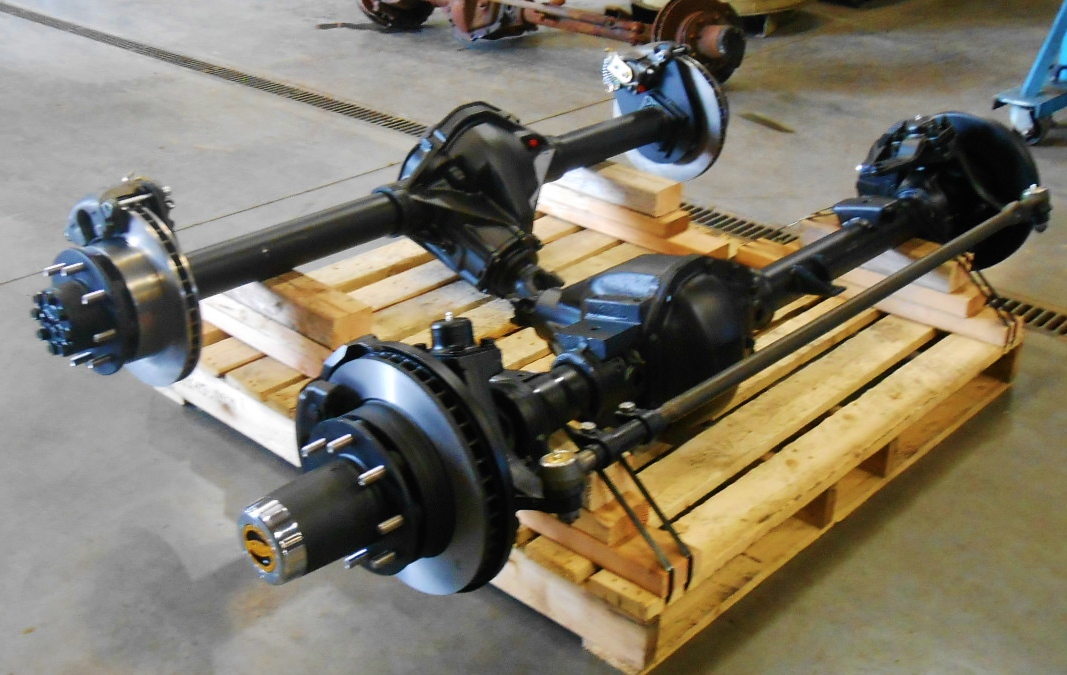The rear axle assembly in a vehicle plays a crucial role in its overall performance and safety. It is responsible for connecting the rear wheels to the rest of the drivetrain, ensuring that they rotate and move in sync with the vehicle. A faulty rear axle assembly can significantly impact the driving experience and lead to various issues that affect both the safety and efficiency of the vehicle. In this article, we will explore the components of the Rear Axle Assembly, how a malfunction can affect driving, and what signs to watch out for.
What is a Rear Axle Assembly?
Before delving into the problems a faulty rear axle assembly can cause, it’s important to understand what this component is and what it does. The rear axle assembly consists of several parts:
- Rear Axle Shaft: This is the main shaft that connects the rear wheels to the differential.
- Differential: The differential allows the rear wheels to rotate at different speeds, especially when turning.
- Bearings: Bearings support the axle and reduce friction.
- Housing: The housing encloses the entire rear axle assembly, providing structural support.
This assembly plays a critical role in transferring power from the engine to the rear wheels, while also supporting the weight of the vehicle and enabling smooth handling.
Symptoms of a Faulty Rear Axle Assembly
A faulty rear axle assembly can manifest in various symptoms that may indicate serious issues. Recognizing these signs early can help prevent more costly repairs and ensure a safe driving experience. Some common symptoms include:
1. Unusual Noises
One of the first signs of a problem with the rear axle assembly is an unusual noise coming from the rear of the vehicle. If you hear grinding, clunking, or whining noises while driving, it could indicate a problem with the axle, bearings, or differential. These noises often get louder with speed or while turning, and should be addressed immediately.
2. Vibrations While Driving
If you feel vibrations through the floorboard, steering wheel, or seat while driving, it may be due to a damaged axle or axle shaft. A bent or broken axle can cause uneven power distribution, leading to vibrations that affect the driving experience. This could be particularly noticeable at higher speeds or during acceleration.
3. Difficulty Turning
The rear axle assembly allows for smooth turning, especially when the vehicle is under load. If you experience difficulty turning or hear a popping sound when turning, it could be due to a faulty differential or axle. When the rear axle is not functioning properly, the vehicle may not turn smoothly or may even skid, which can be dangerous.
4. Uneven Tire Wear
A malfunctioning rear axle assembly can lead to uneven tire wear. Since the axle is responsible for transferring power to the wheels, an issue with it may cause one wheel to work harder than the other. This can result in excessive wear on one or more tires, reducing their lifespan and compromising vehicle stability.
5. Pulling to One Side
If your vehicle pulls to one side while driving, especially during acceleration, it could be due to an issue with the rear axle assembly. A bent or misaligned axle may cause one wheel to rotate at a different speed than the other, leading to pulling or drifting. This can make driving feel uncomfortable and can affect your control over the vehicle.
6. Fluid Leaks
A common symptom of rear axle failure is fluid leakage. The differential and other parts of the rear axle assembly are lubricated with oil or grease. If a seal is damaged, fluid can leak out, which will result in improper lubrication and increased wear on the axle components. This can cause significant damage if not addressed promptly.
How a Faulty Rear Axle Assembly Affects the Driving Experience
A faulty rear axle assembly can lead to a host of issues that affect both the performance and safety of your vehicle. Some of the most notable impacts include:
1. Reduced Handling and Stability
The rear axle assembly is a critical component in maintaining the handling and stability of your vehicle, especially during turns. If the axle is damaged, it can lead to poor handling, making it more difficult to control the vehicle, particularly at higher speeds or on slippery roads. In extreme cases, a failed axle can cause the vehicle to lose traction entirely, leading to a loss of control.
2. Decreased Safety
A malfunctioning rear axle assembly can compromise vehicle safety. For example, if the axle breaks or becomes severely damaged while driving, it can cause the rear wheels to lock up or fail to rotate properly. This could result in a sudden loss of control, leading to accidents or collisions. Furthermore, a faulty axle can also affect braking performance, making it harder to stop the vehicle in a timely manner.
3. Decreased Fuel Efficiency
When the rear axle assembly is malfunctioning, it may cause the vehicle’s drivetrain to work less efficiently. This can lead to increased fuel consumption, as the engine has to work harder to transfer power to the wheels. Increased friction and resistance in the rear axle can also cause the vehicle to lose power, which means that more fuel is required to maintain speed, ultimately leading to lower gas mileage.
4. Costly Repairs and Further Damage
Ignoring the signs of a faulty rear axle assembly can lead to more severe problems and expensive repairs. A damaged axle can cause excessive wear on other parts of the drivetrain, such as the transmission or differential. In some cases, a complete axle failure may require a full replacement, which can be a costly process. Regular maintenance and prompt attention to axle issues can help avoid these expensive repairs.
Preventing and Addressing Rear Axle Issues
The best way to prevent rear axle problems is through regular maintenance and timely inspections. Here are some tips to help maintain a healthy rear axle assembly:
- Regularly Inspect for Leaks: Ensure that there are no leaks in the axle seals or differential, as fluid loss can lead to further damage.
- Monitor Tire Wear: Uneven tire wear can be an indicator of axle problems, so regularly check your tires for signs of abnormal wear patterns.
- Stay on Top of Lubrication: Proper lubrication is crucial to the health of the rear axle components. Be sure to replace the axle fluid according to the manufacturer’s recommendations.
- Address Warning Signs Promptly: If you notice unusual noises, vibrations, or handling issues, have your vehicle inspected by a mechanic immediately.
Conclusion
A faulty rear axle assembly can significantly affect your driving experience in a number of ways, from poor handling and vibrations to safety risks and increased repair costs. Recognizing the symptoms of axle failure early on and addressing them promptly can help you avoid severe damage to your vehicle and ensure that you remain safe on the road. Regular maintenance and timely repairs are key to ensuring that your rear axle assembly remains in top condition, contributing to a smoother, safer, and more efficient driving experience. You can visit Trendinghub24 to get more information.




